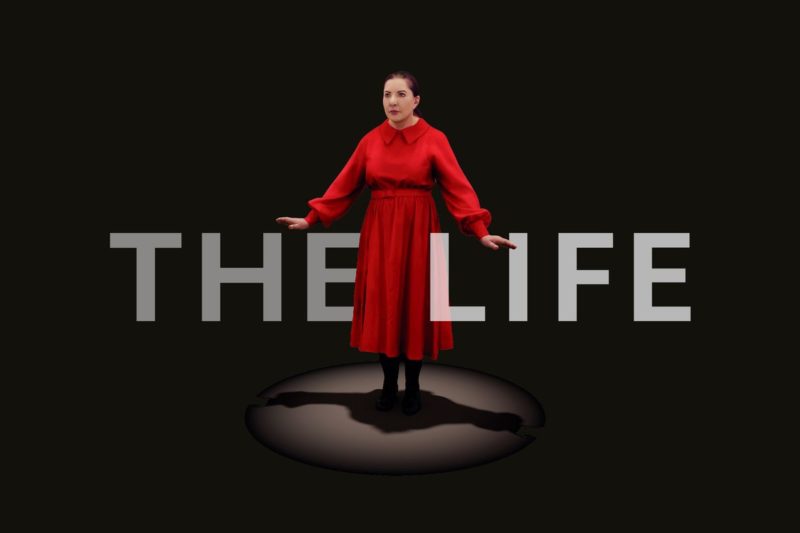Marina Abramović’s latest project, “The Life,” was on at the Serpentine Gallery in London last week. Publicized as the first mixed reality art experience, the visitors are greeted by assistants in lab coats who ask us to hand in our possessions and phones and advise that the artist wishes that this is a meditative experience hence talking should be kept at a minimum. Still, while we are waiting for our turn to be fitted with virtual reality headsets there is opportunity for exchanges of impressions that reveal some unease and draw comparisons to episodes of Black Mirror, a British TV series which taps into the collective discomfort about the unforeseen consequences of technological advances. Headsets on, we are guided by the hand to a room, to have them calibrated and then steered to find a spot among other visitors around a roped circle.
Marina Abramović’s hologram emerges from a cloud of blue dots before it disappears in a similar way moments later in order to reappear and so on, a kind of fort da sequence were it not for her footsteps which we see and hear in the gap of her absence. In that sense, something of her representation is always there. In another sequence she extends her stay with the audience and in the process makes some faint movements with her arms.
Apparently the difference from virtual reality is that in mixed or augmented reality the virtual experience is within the real physical space (we can still see the gallery and other visitors) and Abramović expressed the wish that “other artists will follow [her] and continue to pioneer Mixed Reality as an art form”.[1]
This show is a far cry from her earlier work which made her famous by challenging the physical and mental limits of her body. For a start, the artist is not even there though in her words: “the fact that the project can be repeated anywhere in the world while I am not there is mind-blowing. I can be present in any spot on the planet”.[2] In line with the contemporary taste for a plus, Abramović is experimenting with new digital forms as a means of surpassing the physical laws and succeeding in being present everywhere yet in no other fashion than that of a semblant, which “make believe” that there is something where there isn’t.[3] Yet the antinomic relationship of the semblant to the real[4] means that this tête-à-tête with the digital representation of Abramović in a space where speech is foreclosed produces perhaps a serene and meditative experience, but there is no encounter as there is no real. For there to be an encounter there has to be a body.
The hologram as the image of the body skews our own perception of reality yet it may potentially augment it in unanticipated ways. See for example, the very recent press on HoloLens such as “Microsoft staff: Do not use HoloLens for war”.[5]
Essentially, Microsoft has signed a deal with the US military to provide augmented reality technology with the goal “to increase lethality by enhancing the ability to detect, decide and engage before the enemy.” We can say that where there is no encounter there is a lethal potentiality.
[1] Cf. https://www.serpentinegalleries.org/exhibitions-events/marina-abramović-life
[2] Ibid.
[3] Miller, J.-A., On the nature of semblants, lesson of 20 November 1991, unpublished.
[4] Ibid.

